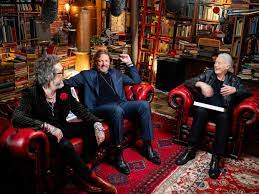
Back in 2021, I wrote an essay about the great musicians who, surprisingly, had performed at my high school, in Kansas City, in the nineteen-sixties:

I couldn’t find a way to include Xavier’s prom in an essay about my own high school, but I thought about it recently when my wife and I saw the new documentary “Becoming Led Zeppelin.” The movie—which was directed by Bernard MacMahon and written by him and Allison McGourty—doesn’t mention the school, of course, but it perfectly describes the musical and cultural contexts in which the 1968 prom took place. The day after we saw the movie, I found a phone number for Rip Pelley, the president of Xavier’s junior student council at the time. I called him, and asked him to reminisce.
“We had two different proms, a junior prom and a senior prom, and each of them always had a typical boring orchestra,” he said. “My idea was pretty simple: let’s put the two proms together and get a rock band.” The juniors were more enthusiastic than the seniors, who didn’t necessarily want eleventh-grade babies spoiling their big party, but a narrow majority voted in favor. On weekends, in those days, Pelley played guitar in a cover band that sometimes performed as a local opening act for the Lemon Pipers, a one-hit wonder from Oxford, Ohio, fifty miles north of Cincinnati. (Their one hit was “Green Tambourine,” which reached No. 1, for a single week, in February, 1968.) Pelley’s band, Uncle Sam’s Population, had an agent, who gave him the phone number of a bigger agent, in New York. “I called the guy, and we went through a list of bands that were available and kind of in our price range,” Pelley told me. They settled on the Grass Roots, a folk-oriented rock group, whose two big songs—“Let’s Live for Today” and “Midnight Confessions”—were unlikely to raise alarms with the Jesuits who ran the school.
Leave a Reply